CHULA VISTA, Calif. — Even as most California hospitals have avoided an incapacitating surge in coronavirus patients, some facilities near the Mexican border have been overwhelmed. They include El Centro Regional Medical Center in Imperial County and Scripps Mercy Hospital Chula Vista in San Diego County, which link the spike in COVID-19 patients to their communities’ cross-border lifestyle.
Some U.S. citizens and legal residents who live in Mexico are crossing the border from Tijuana and Mexicali into the U.S. for treatment. Dr. Juan Tovar, an emergency physician and chief operations executive for Scripps Mercy Hospital Chula Vista, said 48% of COVID-positive patients who visited the emergency room between May 24 and May 30 said they had recently traveled to Mexico. That figure jumped to 60% between May 31 and June 2. The hospital is about 10 miles from the San Ysidro Port of Entry, the busiest land border crossing in the Western Hemisphere.
Only about 5% of COVID-19 patients reported they’d recently been to Mexico at Scripps’ three other emergency rooms farther north, he said.
“We are now transferring COVID-19 patients out of Chula Vista to other Scripps hospitals farther north on a fairly regular basis — 21 over the last week — to help decompress our hospital here,” Tovar said.
About two hours east, El Centro Regional Medical Center was so overwhelmed by COVID-19 patients it had to divert some to health care facilities in San Diego, National City and elsewhere. There have been more than 2,025 confirmed cases in Imperial County, which has the highest COVID-19 hospitalization rate in the state, said Andrea Bowers, special projects coordinator for the county health department.
“We know that our community has family on both sides of the border, so we’re relating the uptick to Mother’s Day weekend,” said Suzanne Martinez, assistant chief nursing officer at the medical center. “That means more risk as people travel back and forth over the border.”
KHN’s Heidi de Marco visited the intensive care units at both hospitals and documented the efforts to keep patients alive.

Patients suspected of having COVID-19 are screened inside a makeshift triage center outside El Centro Regional Medical Center in El Centro, California. The hospital is trying to keep patients who do not require acute care out of the hospital to limit spread. (Heidi de Marco/California Healthline)

Nurse Brianna Mendoza wheels a patient with coronavirus symptoms into the triage tent on May 28, 2020. “I’ve had a few people saying that they have had to cross the border to come here” because they prefer to get care in the U.S., Mendoza says.

Sylvia Cervantes, a medical assistant, assesses a patient who might have COVID-19. Cervantes usually works in the oncology department but was assigned to help in the triage tent.
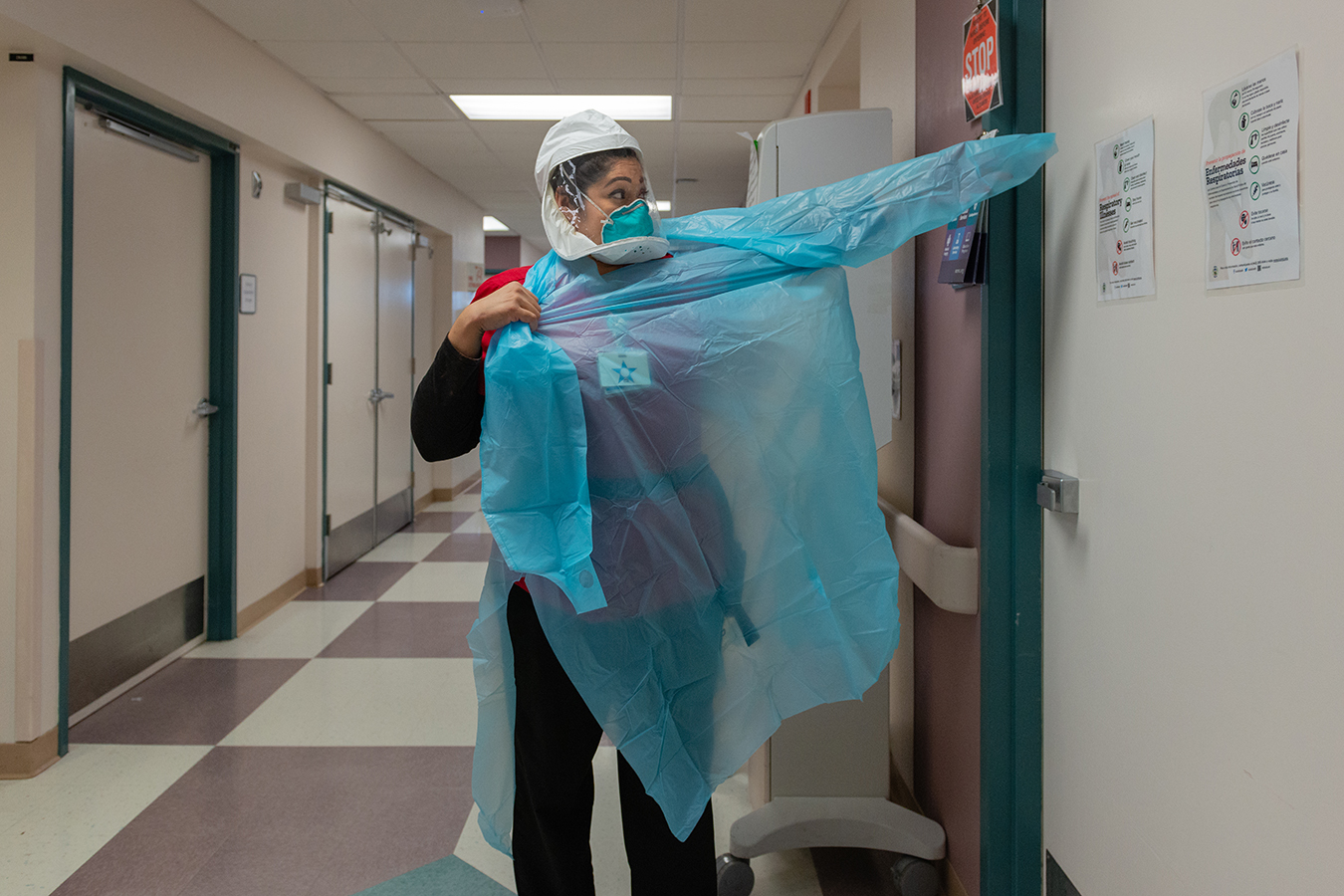
A health care worker prepares to treat a COVID-19 patient on the medical-surgical floor. On May 28, the hospital had 41 coronavirus patients. (Heidi de Marco/California Healthline)
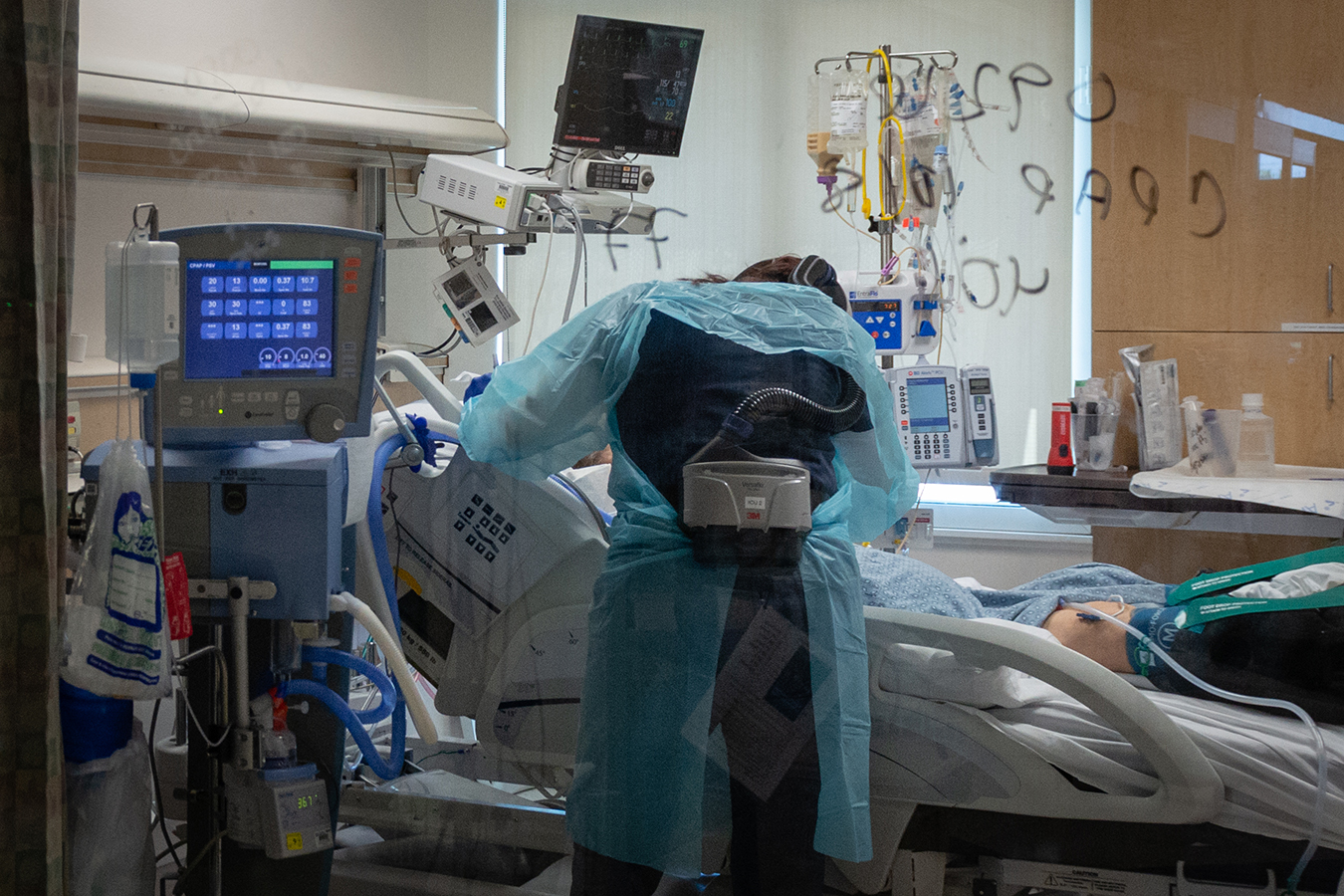
A registered nurse wearing protective equipment treats a COVID-19 patient in the intensive care unit. Ten beds in the hospital’s 12-bed ICU were filled with coronavirus patients. (Heidi de Marco/California Healthline)
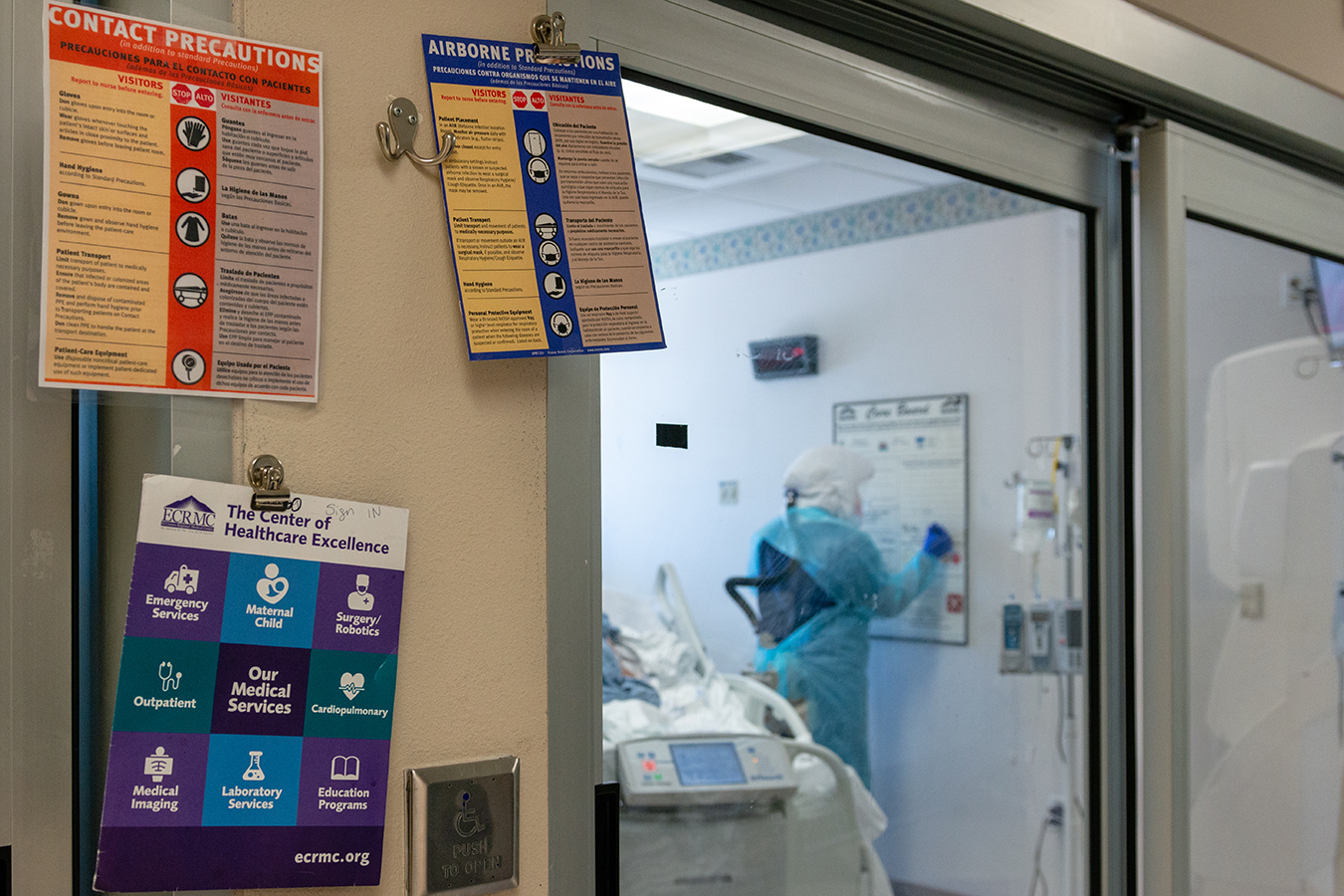
Health care workers must wear a special respirator, a gown and gloves before entering a COVID-19 patient’s room. (Heidi de Marco/California Healthline)
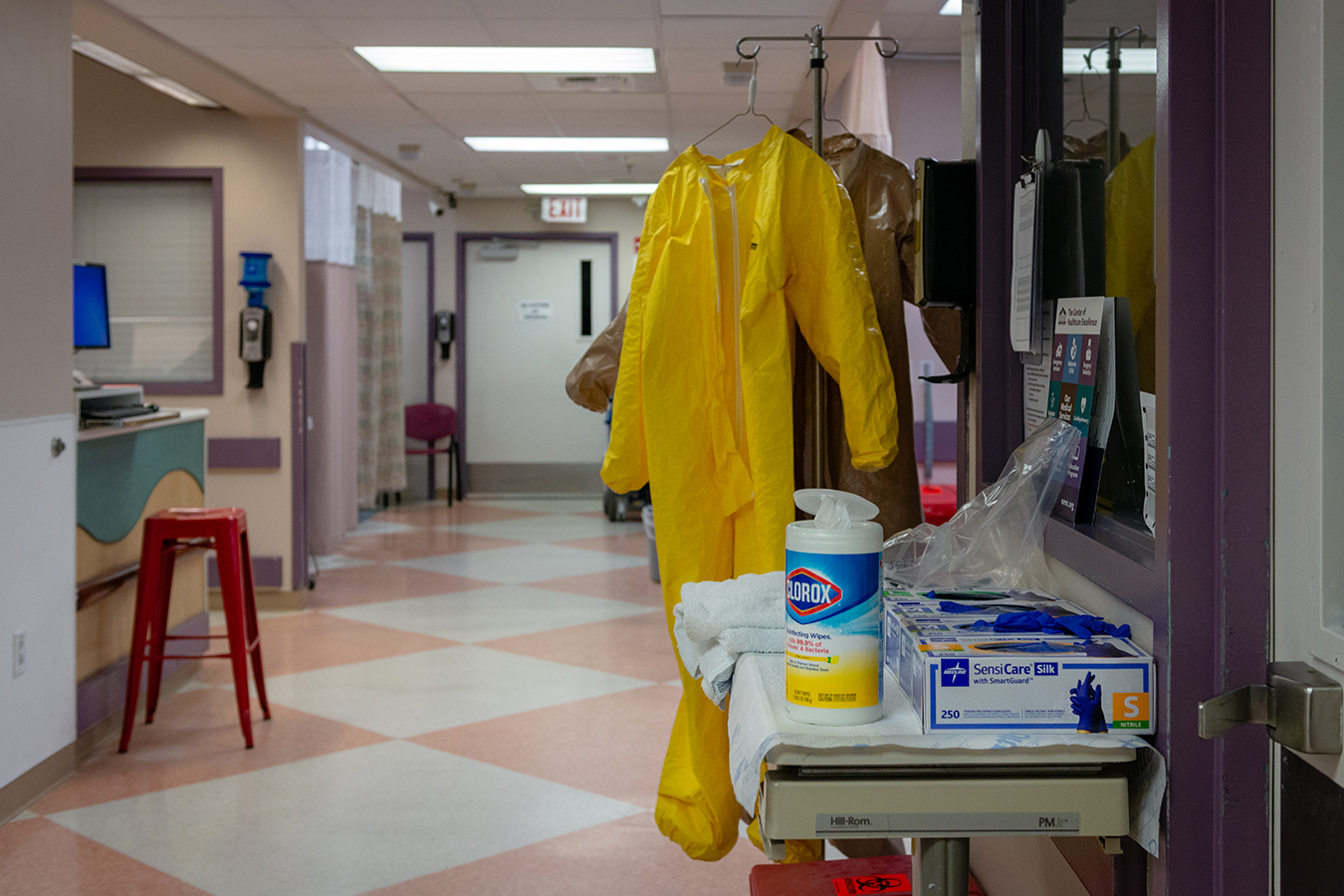
Hospital staff members tending to COVID-19 patients must put on full-body protective suits to enter an isolation room in the emergency department. (Heidi de Marco/California Healthline)

El Centro Regional Medical Center is about 20 minutes north of Calexico, California, an ordinarily bustling border town with street shops and food vendors. But during the COVID-19 pandemic, the streets are quiet and nearly empty.

People make their way to Mexicali, Mexico, through the border crossing at Calexico. According to the U.S. Department of State, about 1.5 million U.S. citizens live in Mexico. In the Mexican state of Baja California, there are more than 5,380 confirmed coronavirus cases. Mexicali, the capital, has at least 2,630, more than any other city in the state.

About two hours to the west, Scripps Mercy Hospital Chula Vista has had roughly 35 to 40 COVID-19 patients every day in recent weeks, says Dr. Juan Tovar, an emergency physician and chief operations executive. That’s quadruple the number of coronavirus patients the hospital was treating at the beginning of April.(Heidi de Marco/California Healthline)

Paloma Garza-Johnson is a registered nurse at Scripps Mercy Hospital Chula Vista.

Garza-Johnson dons her personal protective gear in the hallway outside an ICU patient’s room on May 29.
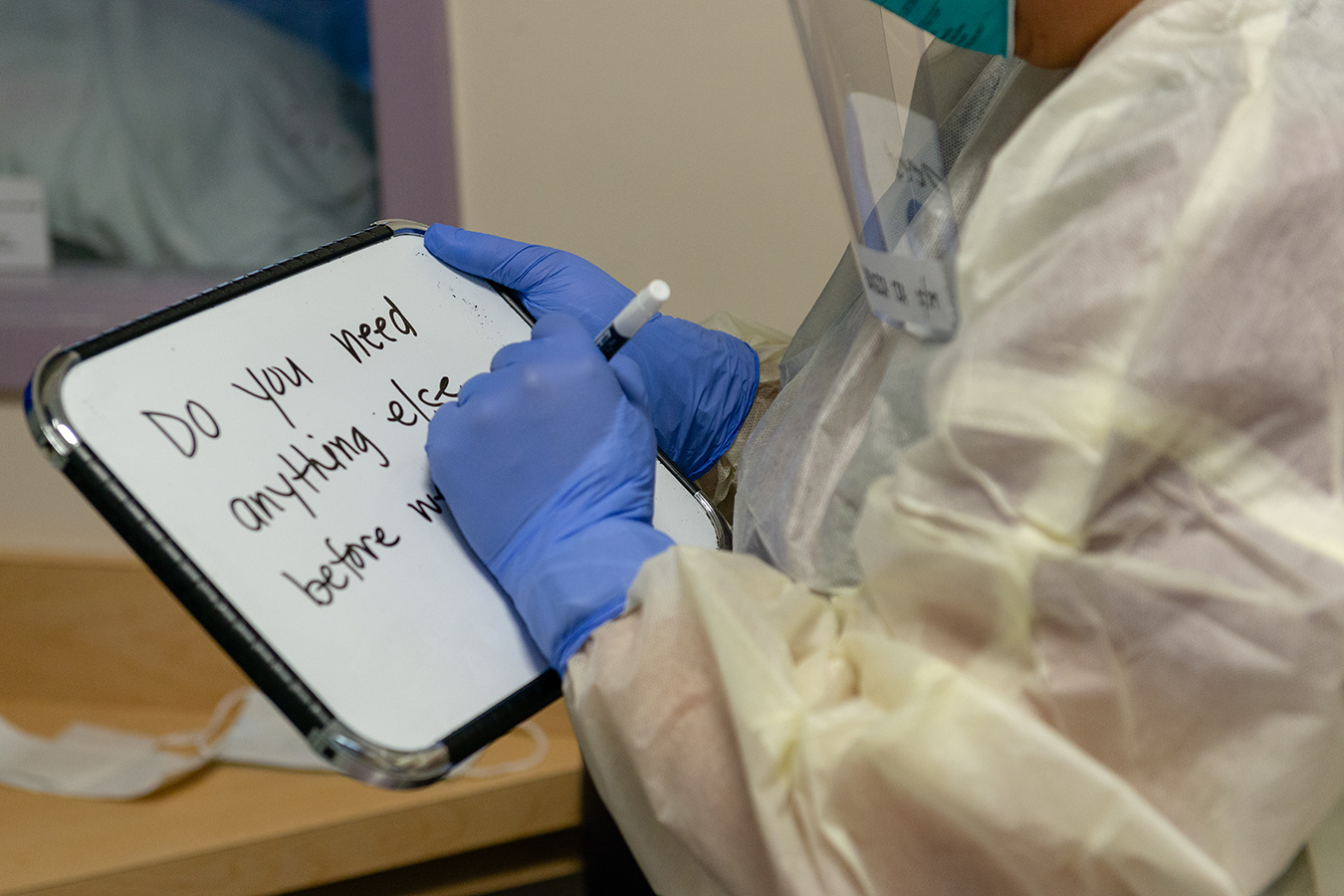
ICU staffers sometimes communicate with one another through the windows using a whiteboard. (Heidi de Marco/California Healthline)
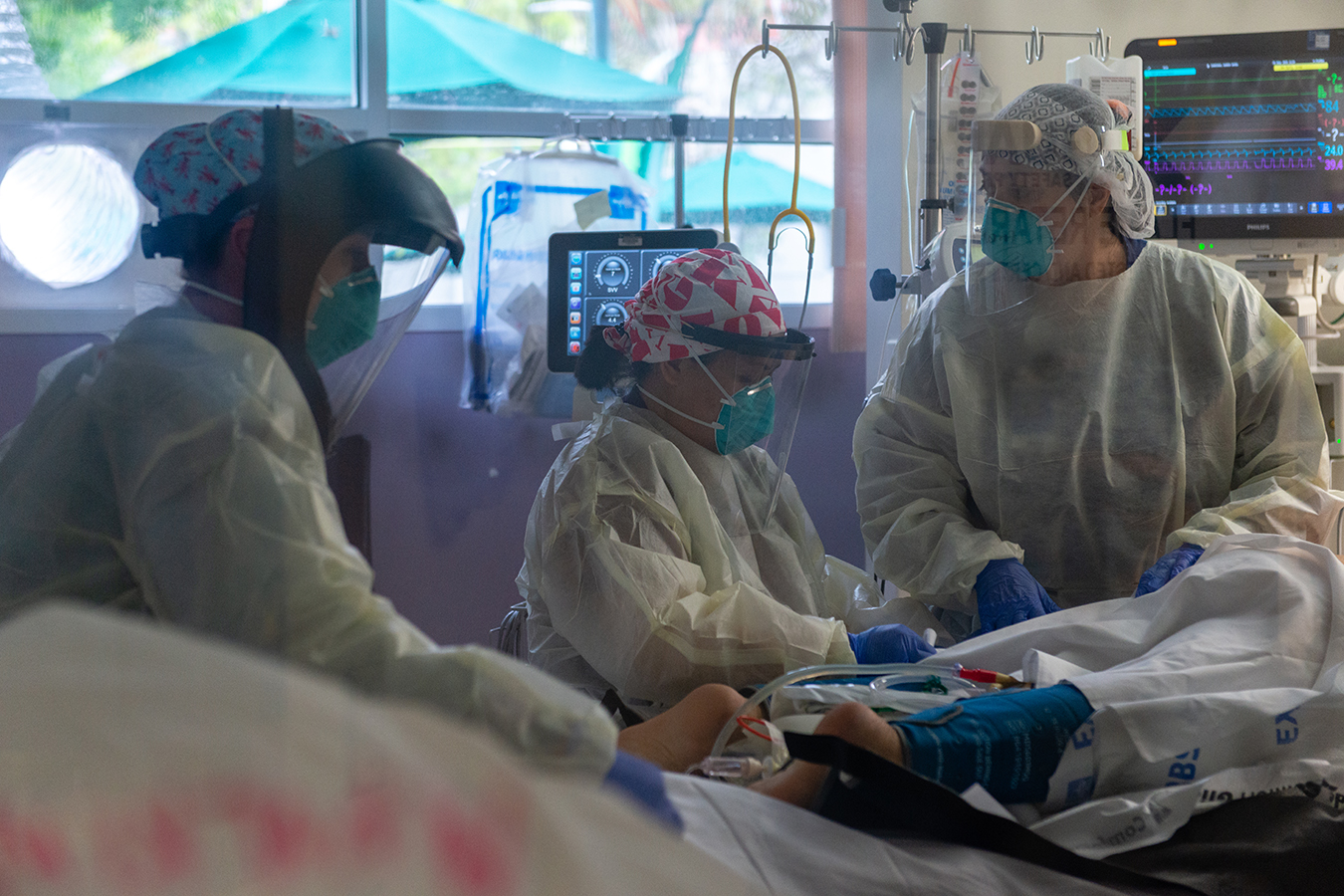
Registered nurse Christina Campolongo (left), certified nursing assistant Vanessa Aquino and registered nurse Paloma Garza-Johnson turn a sedated coronavirus patient into the prone position, face down, which may allow more oxygen into the patient’s lungs. (Heidi de Marco/California Healthline)

The Rev. Mark Weber, coordinator of chaplaincy services at Scripps Mercy Hospital Chula Vista (left), and the Rev. Emmanuel Ochigbo, a chaplain, pray outside a coronavirus patient’s room before performing the sacrament of healing.

Ochigbo wets his finger with oil before entering the room to anoint the patient.
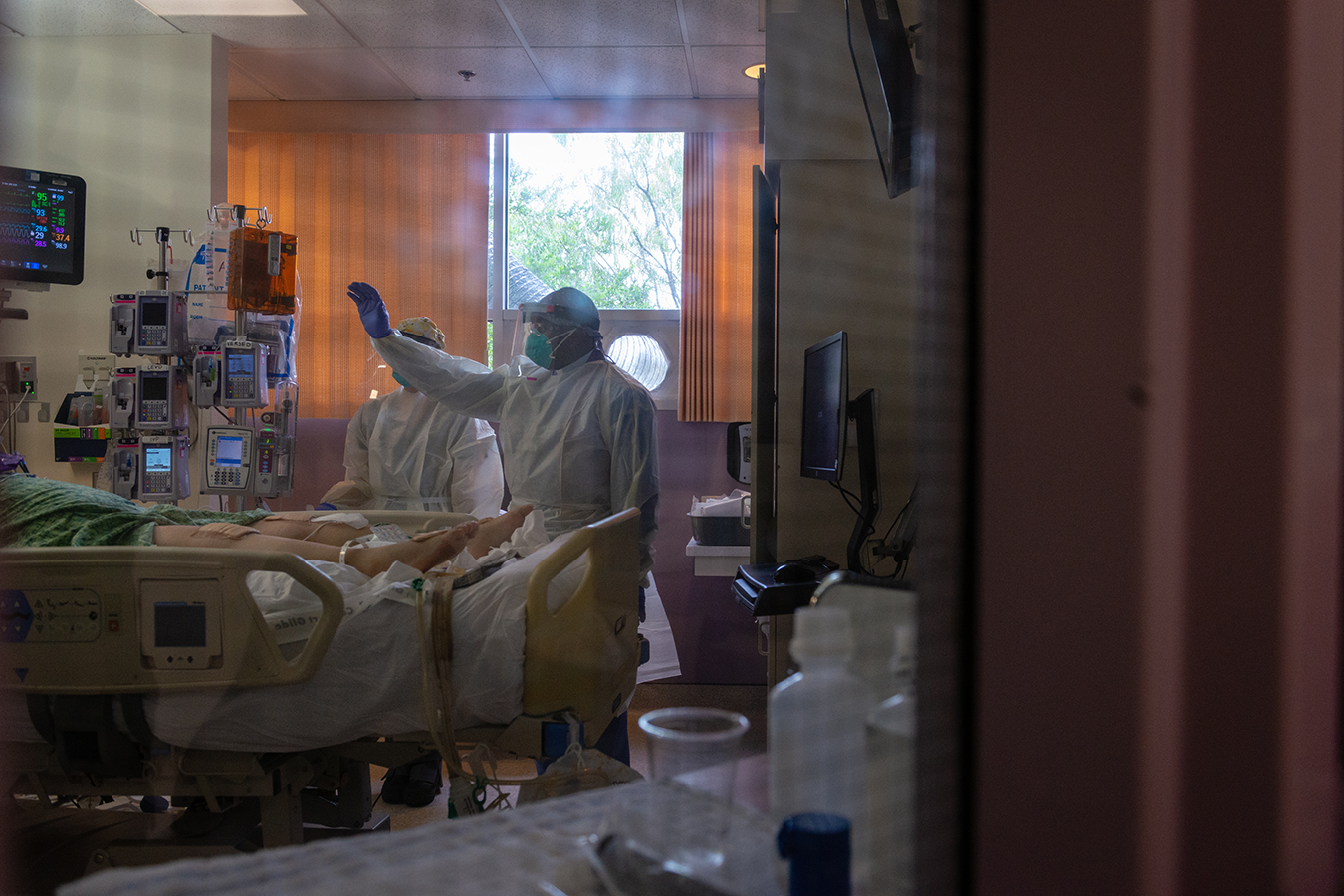
Ochigbo administers the sacrament of healing. The Anointing of the Sick is given to seriously ill and dying people. Ochigbo has modified it for COVID-19 patients, applying oil only to the forehead and feet. (Heidi de Marco/California Healthline)


